Mexico has earned a reputation for having one of the best cuisines. From tlayudas to flautas, here’s some of the best Mexican food to expand your palate.
Chorizo
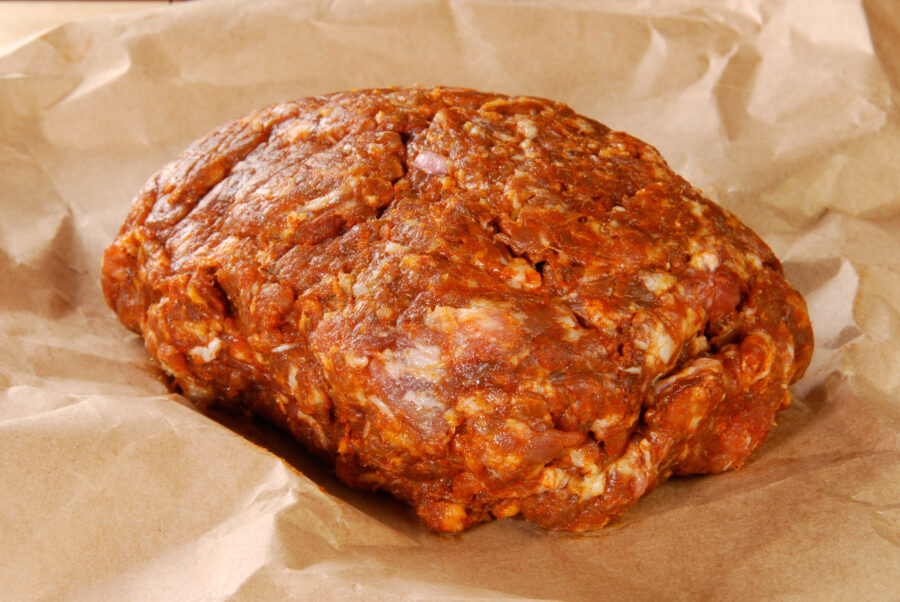
Not to be mistaken for the Spanish sausage of the same name, Mexican chorizo is spicier and cooked with peppers. It also has a shorter shelf life.
It’s seasoned with chili peppers and vinegar before being put into sausage casings. It can be eaten cooked, or even raw, if that’s your thing.
The next time you need some protein in your meal, try adding some Mexican chorizo. It goes incredibly with potatoes and perfectly in burritos or quesadillas.
Tostadas
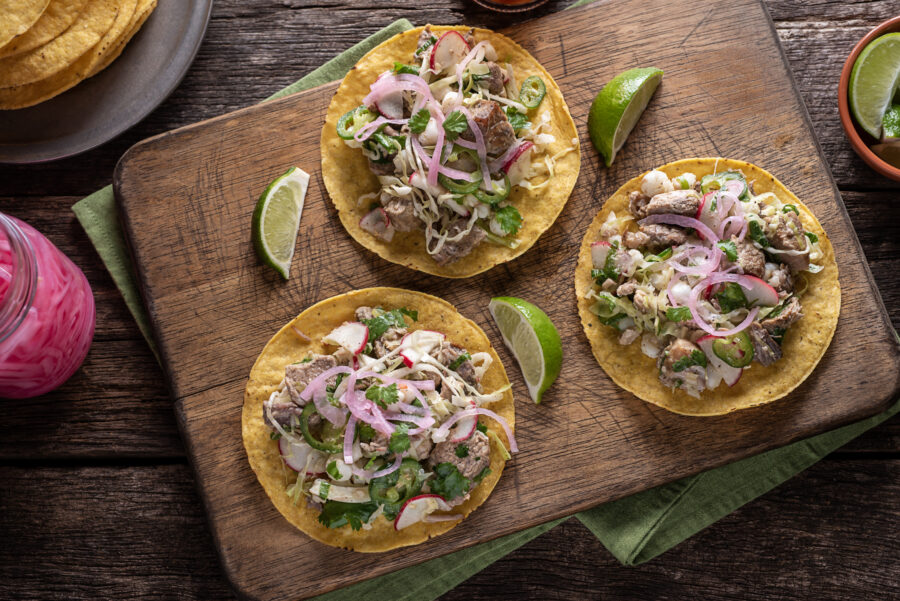
Tostadas are perfect mix-and-match food. Made with crunchy corn tortillas, they’re often referred to as “flat tacos.” While tostadas are their own thing, the moniker isn’t inaccurate.
A variety of toppings are served on tostadas, including chicken, beef, or pork. If you like refried beans, then you’re in luck: they often act as the base.
However, the real beauty of this dish is its endless variety. Since it doesn’t rely on meat, you can add it to your repertoire of vegetarian recipes.
Pan de Muerto
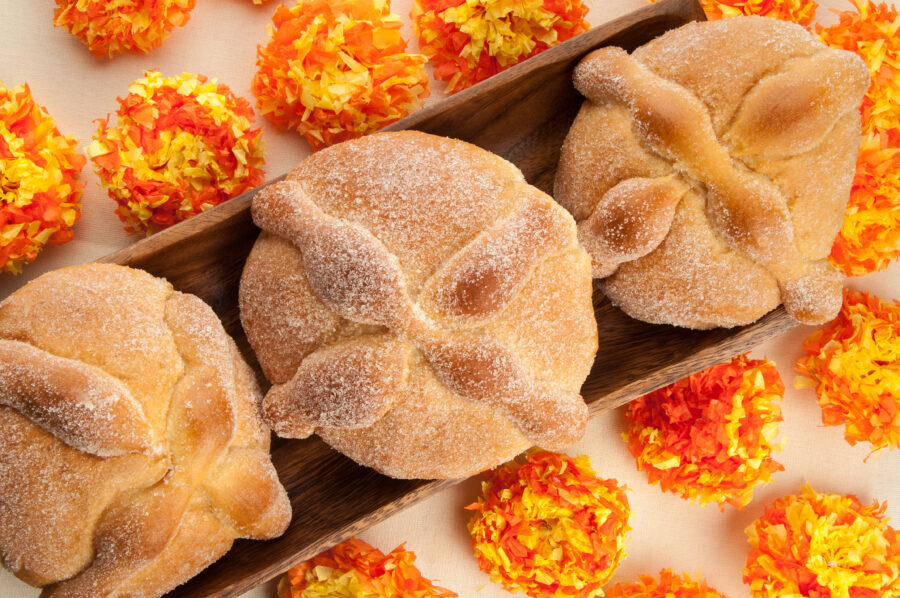
This sweet bread is baked for Día de los Muertos. Celebrated from the end of October to the beginning of November, pan de muerto nourishes dead ancestors.
It’s flavored with oranges, though that can vary depending on the baker. There’s also no one way to decorate the bread. It’s all up to the individual’s tradition.
It can be topped with a simple glaze or powdered sugar. Regardless, the loaves usually have the same pattern on top, an X-like shape with a nub.
Tlayudas
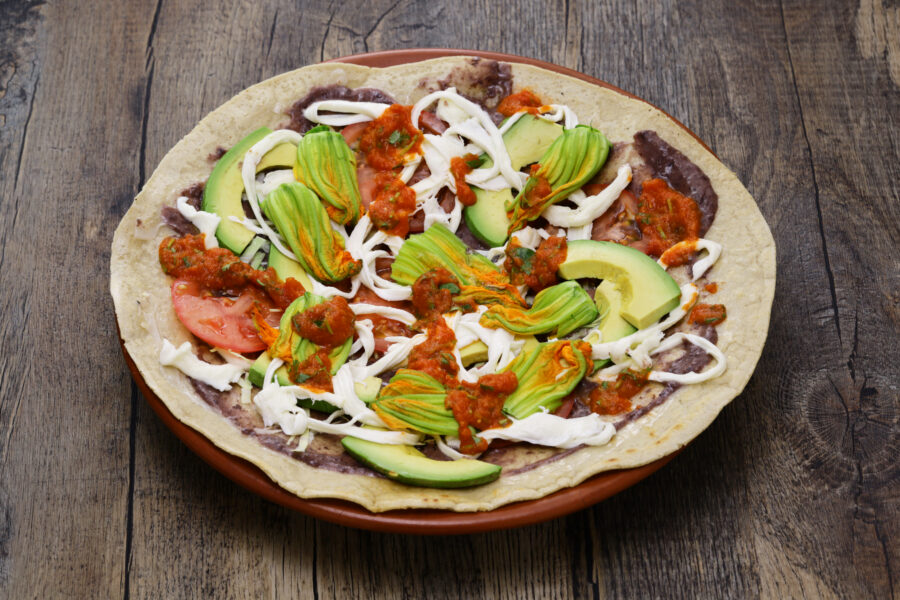
Often referred to as “Oaxacan pizza,” this dish is served on a large, crunchy corn tortilla. The toppings vary, but some are more common than others.
If you order a tlayuda in Oaxaca, expect a base of asiento (melted pork fat paste). It’ll be topped with beans, queso fresco, and meat, usually dried beef.
If you want veggies, cabbages and avocados are common. Still, there are plenty of other toppings you can go for; it all depends on the specific restaurant.
Atole

This sweet beverage will warm your belly on a cold winter’s night. If you’re looking for a hot chocolate alternative, this is it.
Also popular in Central America, atole has a thick consistency. It is made with corn flour, vanilla, cinammon, cane sugar, water, and a splash of milk.
Seriously, what’s not to love about this drink? It’s simple, filling, warm, and sweet. Dunk a cinnamon stick into the mix, and you’re ready to go!
Micheladas (Mexican beer cocktail)
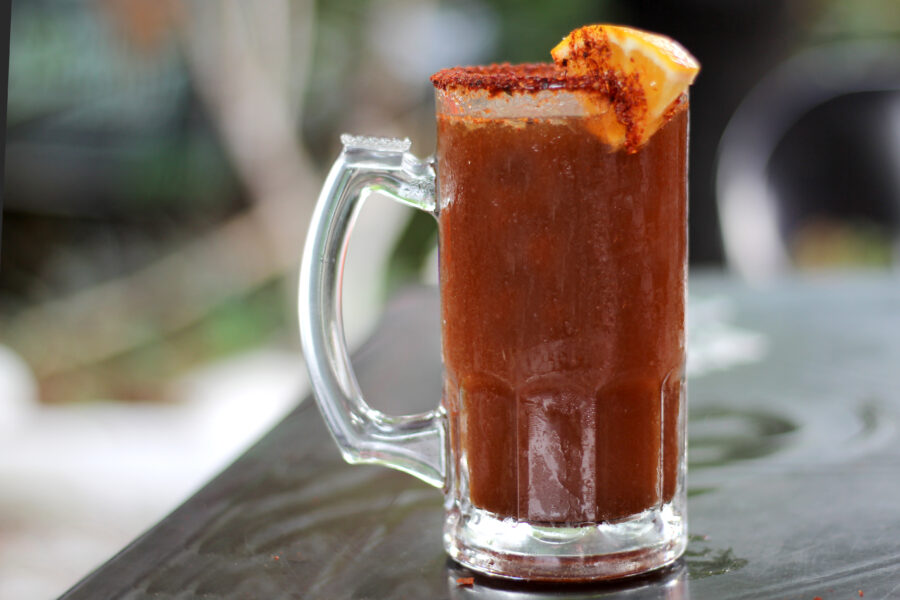
A michelada is a spicy, refreshing cocktail made for the morning after a fun night out. It could also be the perfect signature cocktail for your dinner.
Often called the “Mexican Bloody Mary,” micheladas are made with beer, lime juice, hot sauce, and tomato juice. Salt the rim with Tajín seasoning or chili salt.
Like Bloody Marys, micheladas can cure killer hangovers. While we can’t testify to whether or not that’s true, it can’t hurt to try this next Sunday brunch.
Refried Beans
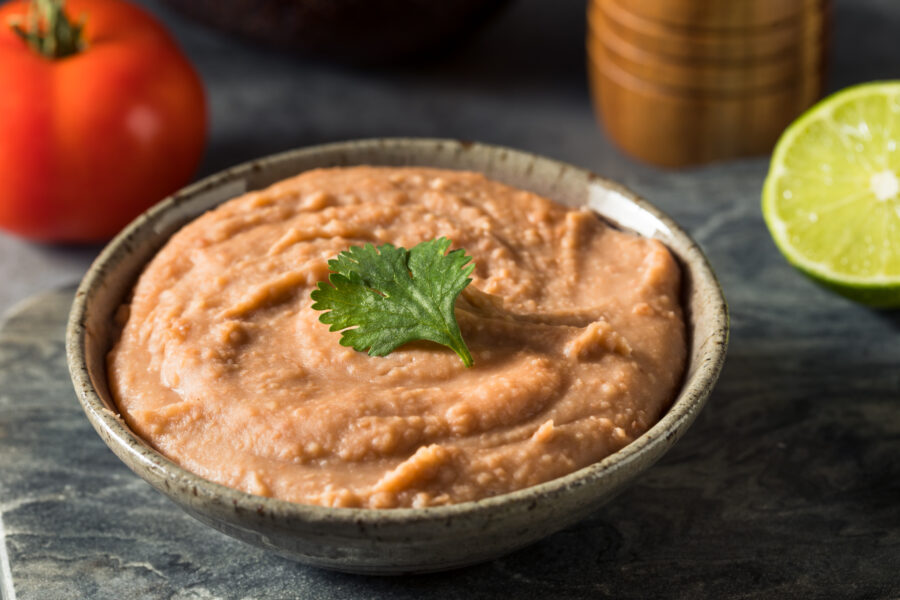
These serve as the base for a lot of other delicious Mexican foods, as you’ve probably already noticed. Once you perfect refried beans, you can make anything.
First, the beans. Pinto beans are the most common, but black beans can sometimes be used. They’re also cooked with a lot of lard.
You can cook them with oil, but lard is the best option. Flavor them with salt, onions, garlic, cumin, and epazote, a Mexican and Central American herb.
Pico de Gallo
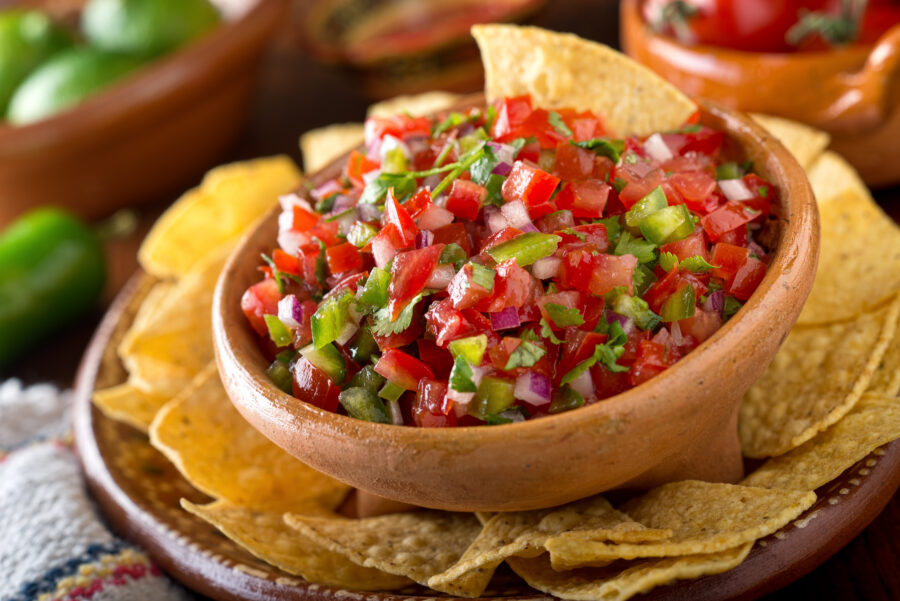
Pico de gallo rocks! It adds flavor to pretty much everything it’s served with, whether you’re dunking your tortilla chips in it, or topping your tacos.
Dice some tomatoes, onions, and chili peppers, before tossing them all together in a bowl. Then, season the mixture with salt, pepper, lime juice, and cilantro.
If you want to go all out, opt for serrano peppers. If you can’t handle any salsa over medium, though, go with jalapeños. Either way, don’t forget them.
Arroz con Leche
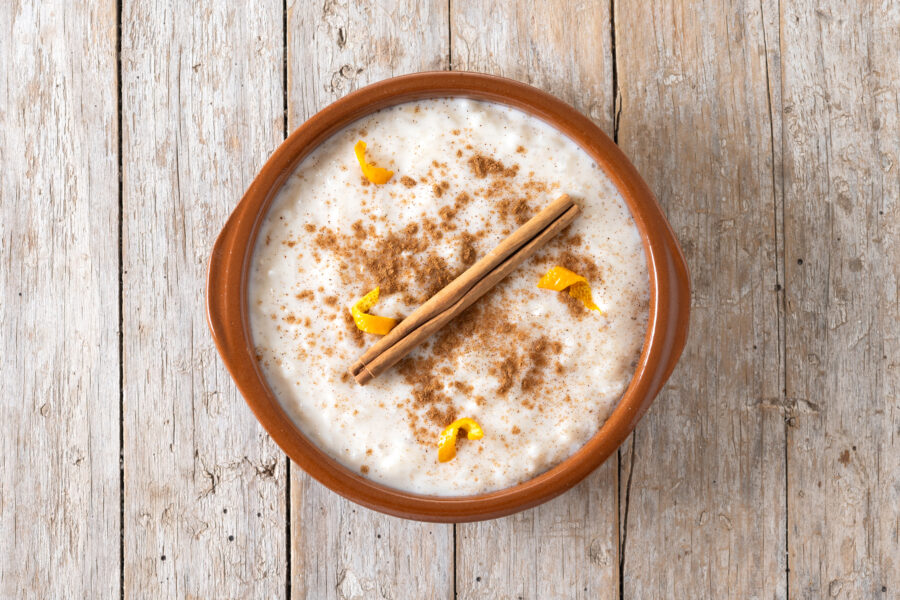
As the name suggests, this Mexican dish requires a lot of milk. Obviously, this dessert will taste best to people who already like rice pudding.
We’re talking evaporated milk, sweetened condensed milk, and whole milk, all mixed together with cooked rice. Be careful, though — you should only stick by these specific kinds.
For a more varied texture, you can add nuts, raisins, and/or other dried fruits. For maximum flavor, boil the water with a couple of cinnamon sticks.
Salsa Roja
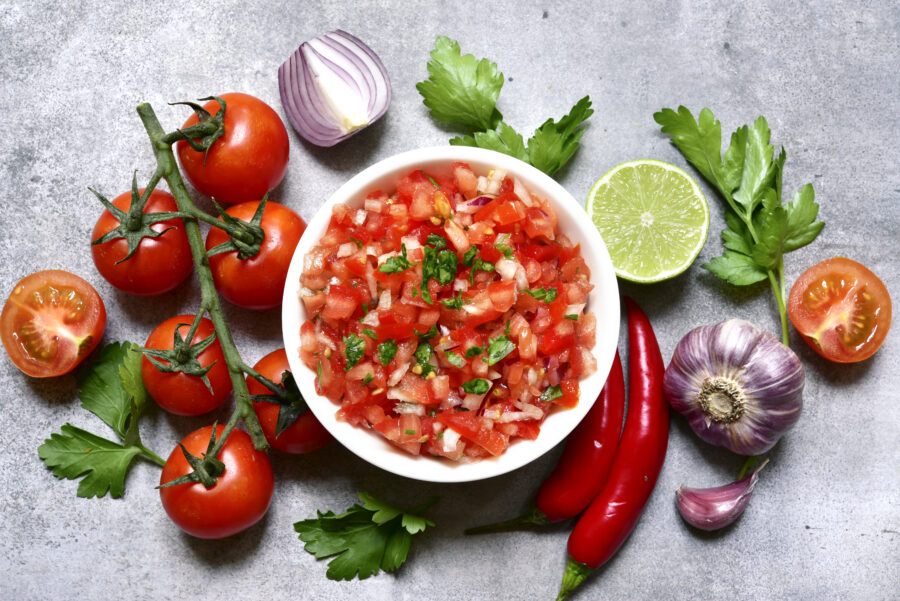
Even if you’re a total novice when it comes to Mexican food, you already know with this one. It’s served at pretty much every Mexican restaurant.
It’s a little more involved than pico de gallo, but is still easy to make. You’ll never want to go back to jarred salsa ever again.
Much like pico de gallo, salsa roja is made with tomatoes, peppers, lime juice, onions, garlic, and cilantro. However, you roast the ingredients before blending them with oil.
Salsa Verde
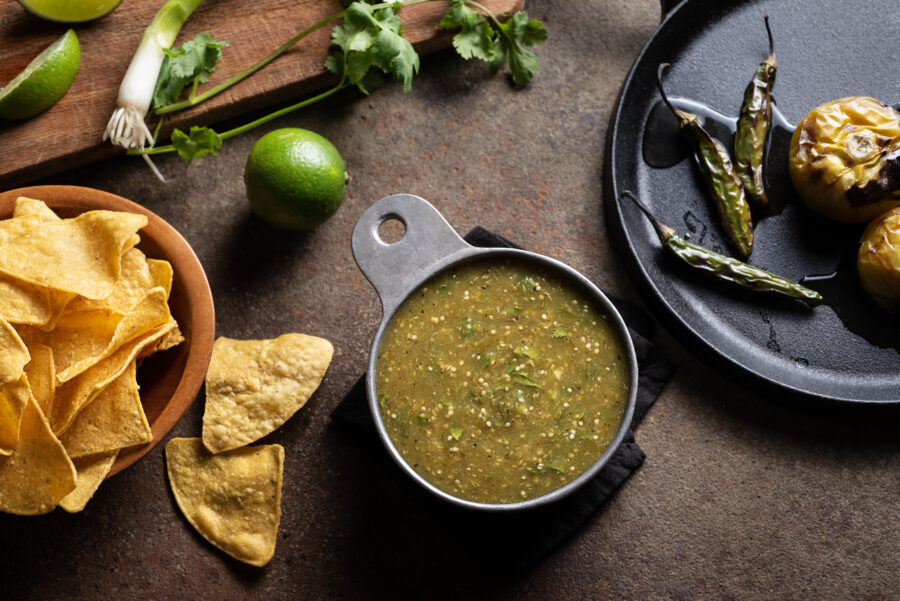
It’s in the name – green salsa. Of course, there’s more to it than that. Salsa verde swaps out the tomatoes for green tomatillos.
Tomatoes are milder and sweeter than tomatillos are. So, if you want a salsa that has a tart aftertaste, go for some salsa verde.
Salsa verde can be a game-changer. For those who aren’t big into salsa roja, but still want to spice up their plate, go for some salsa verde.
Churros
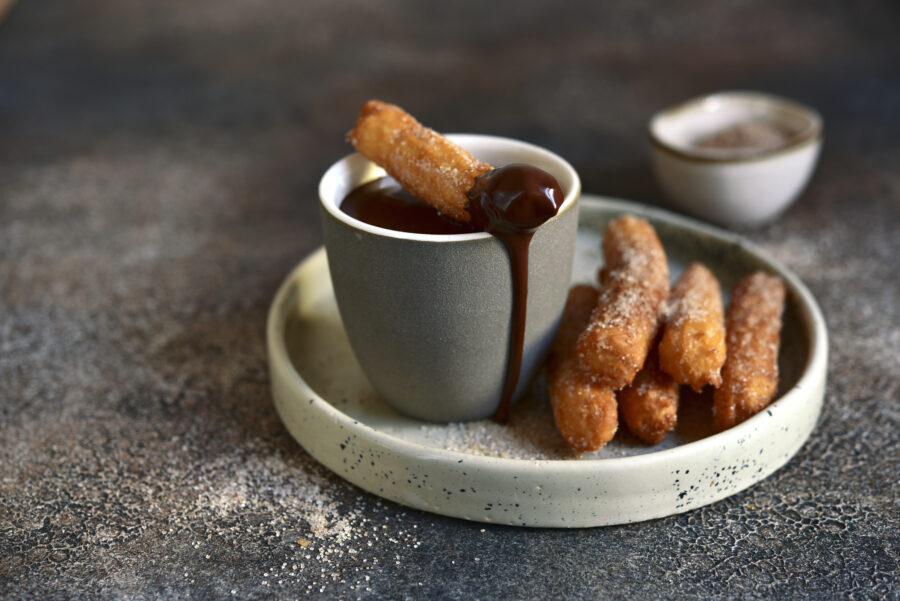
Churros are a fried, delicious donut caked in sugar and cinnamon. If you weren’t immediately sold, we don’t know what to tell you.
You might associate them with fried carnival desserts, but they’re also served as a breakfast treat. This is common in Mexico and the Iberian Peninsula.
They’ve been in Mexico for so long that they’re commonly regarded as a staple. If you want some added sweetness, dip them in melted chocolate or caramel.
Carne Deshebrada
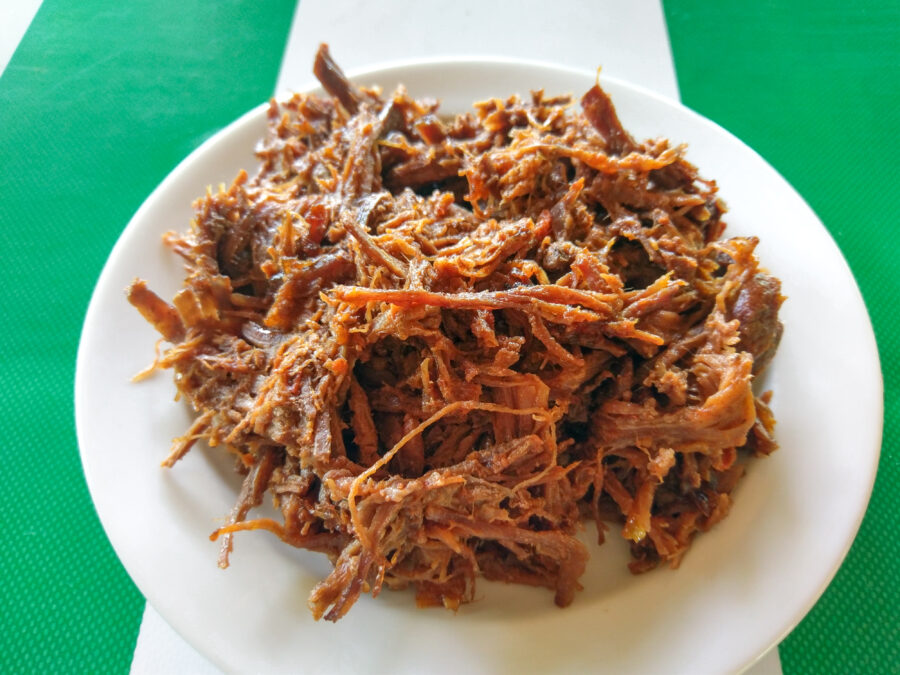
A hefty, meaty dish, carne deshebrada is the Mexican version of a popular Cuban meal. So, what does “carne deshebrada” translate to in English?
Well, it means “shredded beef,” which is a vital component in many Latino dishes. Once you perfect it, you can use it in anything.
Moist and flavorful, carne deshebrada stands in opposition to carne asada. Carne asada is grilled instead of slow-cooked, making it a little tougher than other meat dishes.
Empanadas
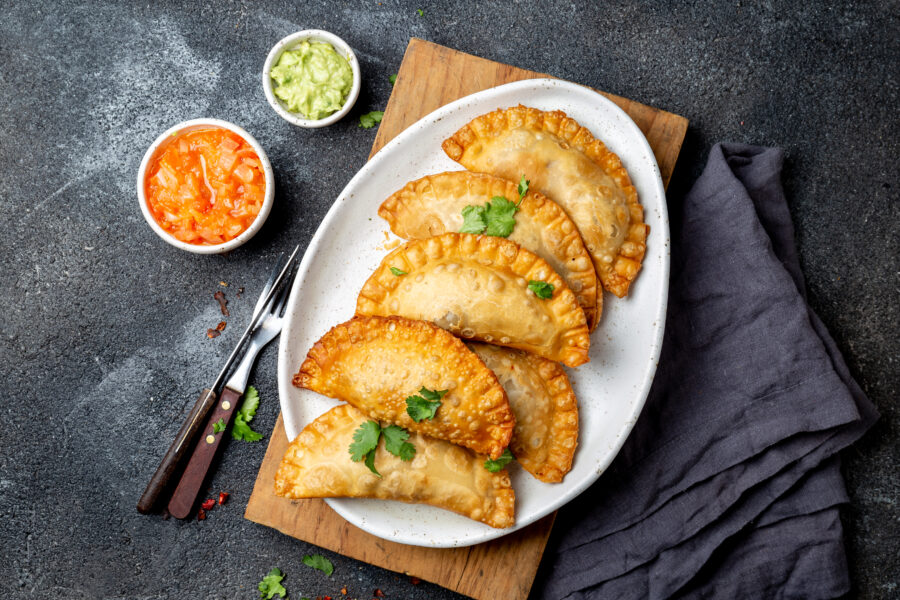
Empanadas’ baked corn masa shell complements all kinds of ingredients. Ground beef, shredded chicken, cream cheese and guava jam — you can fill an empanada with anything.
They’re a very common street food found in most Spanish-speaking countries, so the specific ingredients differ depending on where you’re buying them from.
If you’re getting them in Mexico, your empanada will probably be filled with beef or cheese. You can top them with pico de gallo.
Birria
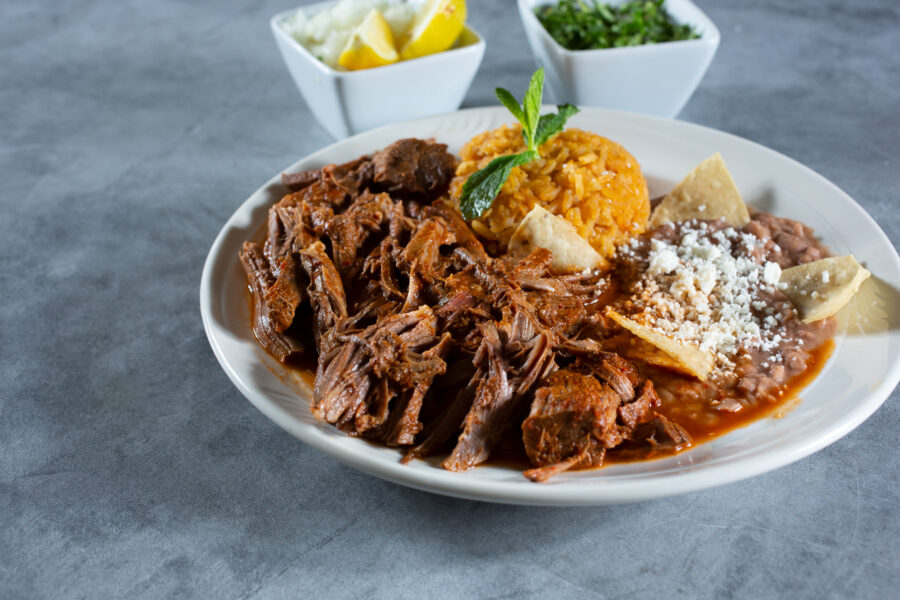
Want to hunker down with a hearty bowl of stew? Aside from your mug of atole, birria has you covered with warmth and spice.
It’s cooked in consomé, a liquid that usually consists of beef broth, apple cider vinegar, adobo sauce, and dried chilis, along with tomatoes, onions, and garlic.
Cilantro, lime juice, oregano, and bay leaves are also added. Cooking up a batch of birria is a great way to utilize your Crockpot.
Flautas
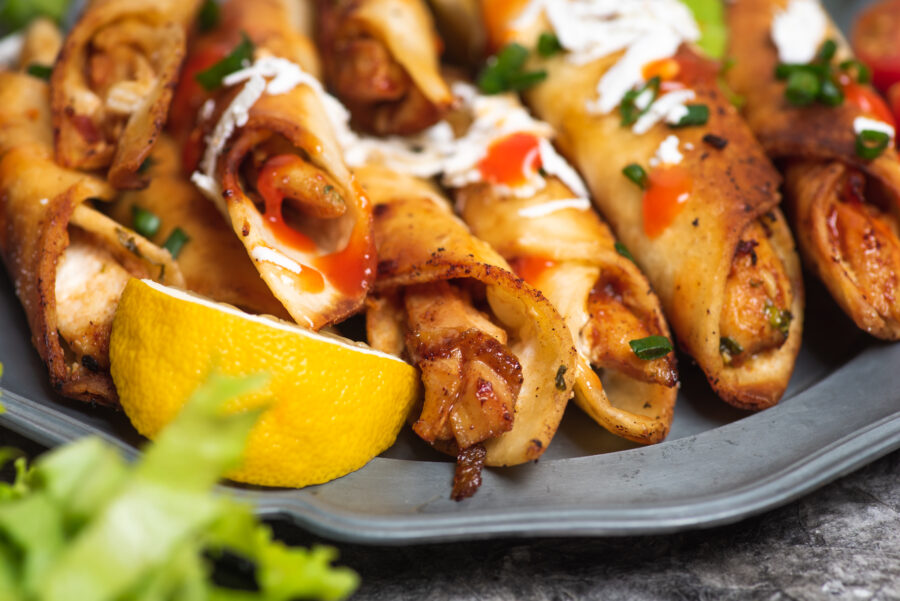
Similar to taquitos, flautas are made from larger tortillas, and end up being longer as a result. They’re perfect for dipping into all kinds of sauces.
Flautas can be filled with chicken or beef, so long as the meat is tender and the tortilla is crispy. You can also try a black bean filling.
If you want to get the most out of your air fryer at home, try air frying your flautas. This requires less oil than pan frying.
Molletes
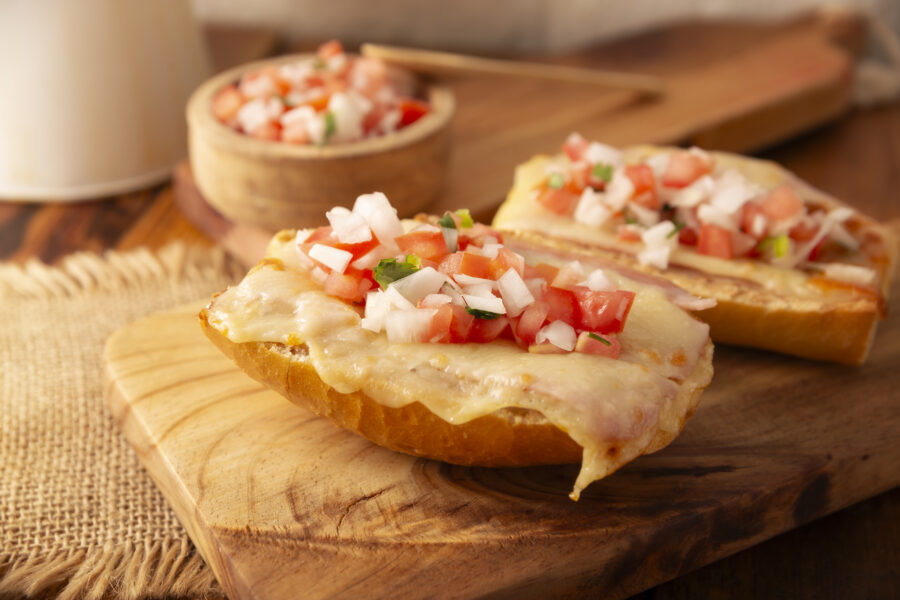
If you like tostadas, give these a try. The two dishes are really similar, except molletes use bread instead of tortillas, like an open-faced sandwich.
Refried beans act as the base, topped with pico and melted cheese. Add some fried eggs and avocado slices for a new take on avocado toast.
Molletes are pretty simple, but you need to remember one thing — toast the bread. It’ll ensure that the toppings don’t fall through before you bite into it.
Tortas (Mexican sandwiches)
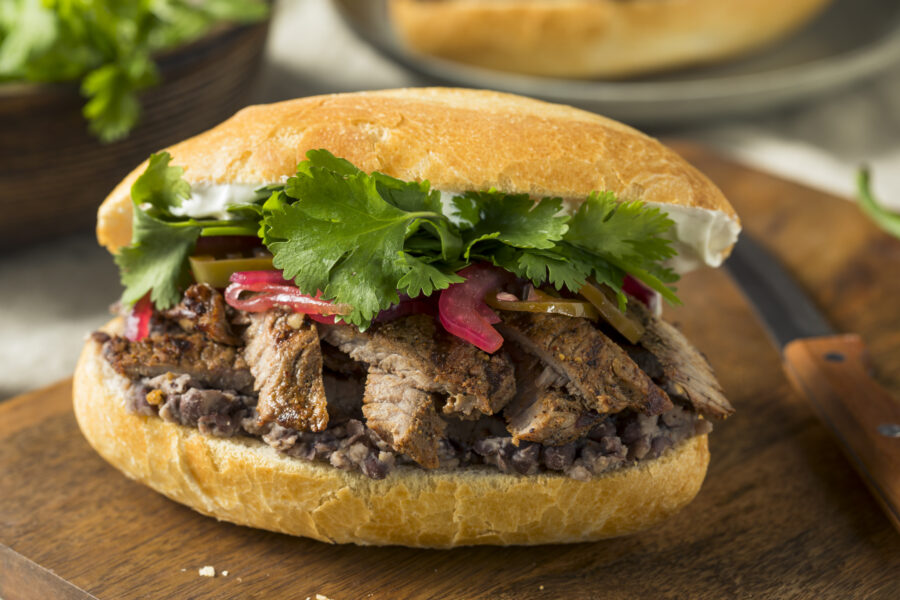
Like many of the other dishes here, you can find tortas in most Spanish-speaking countries. In Mexico, however, they’re usually served on round, fluffy rolls called teleras.
As you’ve probably picked up by now, refried beans are a must. They make the perfect base for these sandwiches, and will make your meal much more filling.
Depending on your preferences, different tortas might appeal more to you. The torta pollo, for instance, features thinly-sliced chicken and tomatoes, while torta carnitas are all about pork.
Huevos Rancheros
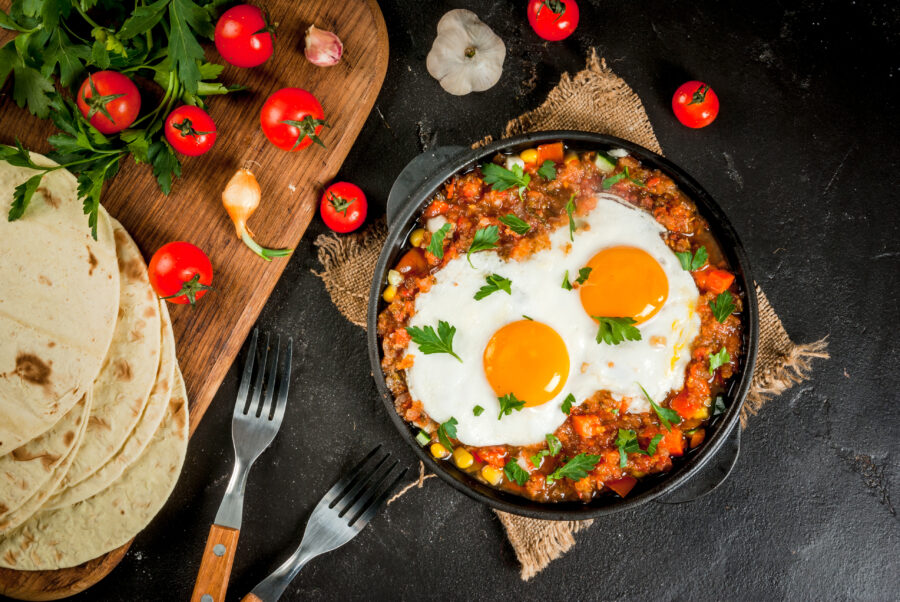
If you haven’t eaten huevos rancheros for breakfast before, do yourself a favor: close this tab, drive to the closest diner or Mexican restaurant, and get some.
Okay, now take a bite. Is that not the best breakfast you’ve ever had? Huevos rancheros translates to “ranch eggs,” a nod at the dish’s history.
If you’re a vegetarian, you’re in luck. Huevos rancheros contain fried eggs, salsa, and refried beans, served on a crispy corn tortilla – no meat required.
Aguachile

Aguachile is a seafood staple prevalent in northwestern Mexico. You make it by marinating raw shrimp in lime juice, then topping it with onions, cilantro, and cucumbers.
Most important is the aguachile sauce, made from a blend of chili peppers, garlic, lime juice, cilantro, and salt, ground together with a molcajete (mortar and pestle).
Avoid heating this up in any way, under any circumstances. No microwave, no oven, no nothing. Aguachile, like ceviche, is best served cold.
Rajas con Crema
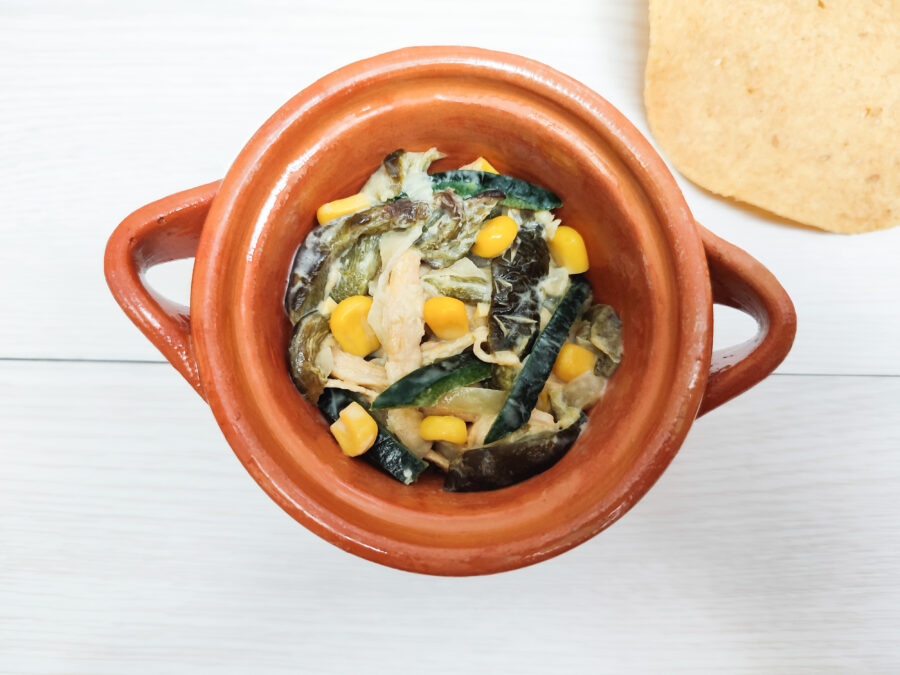
Rajas con crema involves slices of roasted poblano peppers and onions soaked in crema. While the dish is still spicy, the crema tames it a bit.
The crema is made from few ingredients, with heavy cream and buttermilk being the most important. Some lime juice and salt are usually added for taste.
Stir the crema in with the veggies in a big pan, then melt some shredded cheese over it. For extra flavor, add shredded chicken and corn kernels.
Alambre
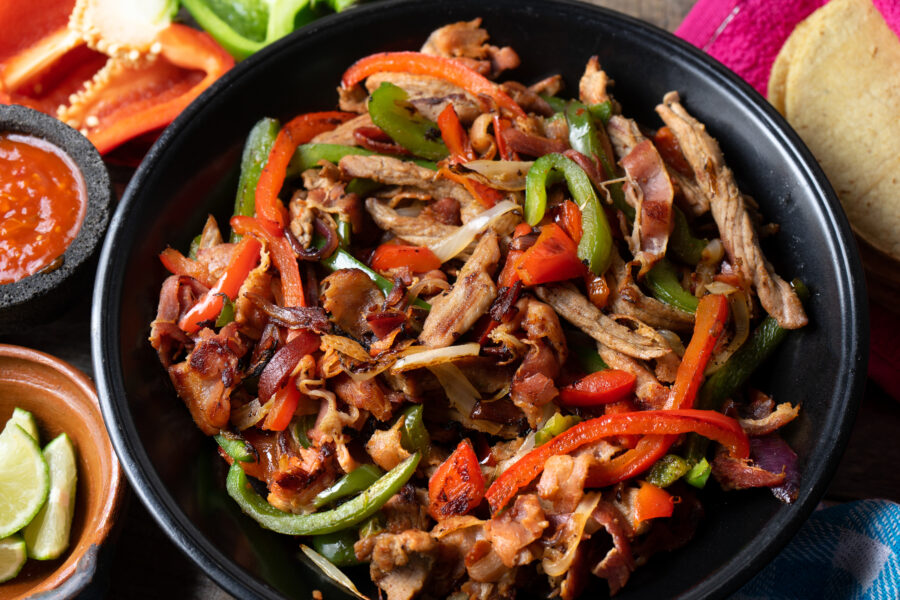
Not only is alambre delicious (of course), it also lends itself well to being cooked in large batches. Serve this to your family or at parties.
This is can also be served like a kebab. Beef, chicken, or pork can be used as the meat, along with onions, bell peppers, and chilis.
The toppings are what complete alambre. Melt cheese over your meat and veggies before sprinkling with bacon bits, then wrap it in a tortilla.
Cochinita Pibil
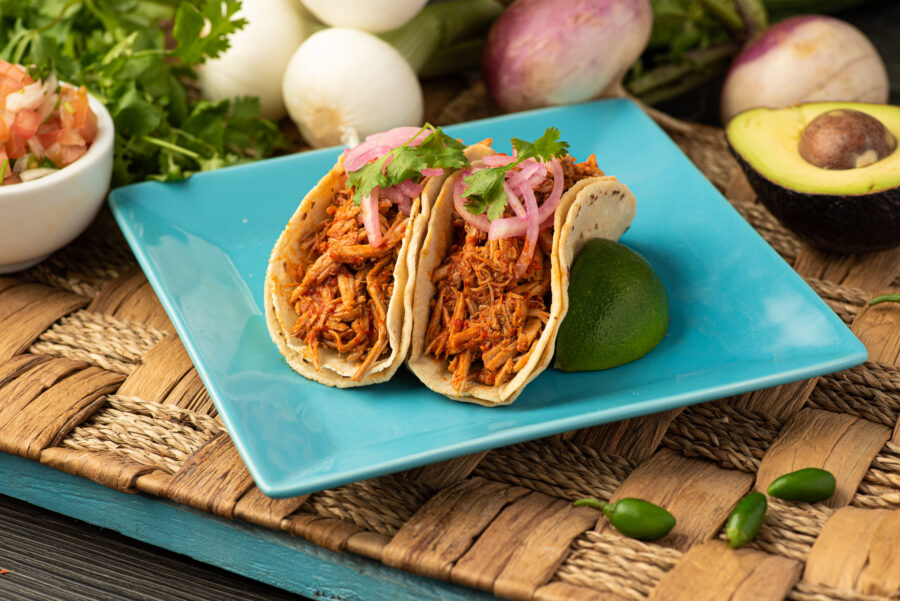
Cochinita pibil originates from the Yucatan Peninsula, and is a traditionally Mayan dish. The word “pibil” refers to the Yucatec Maya word for earth oven.
The meat (usually pork) is marinated with orange juice, garlic, cinnamon sticks, cumin, and bay leaves, then wrapped in banana leaves and cooked until tender.
Achiote, a seed with naturally vibrant red coloring, is used to flavor and color the pork. Serve on tortillas (corn or flour) and enjoy!
Pambazos
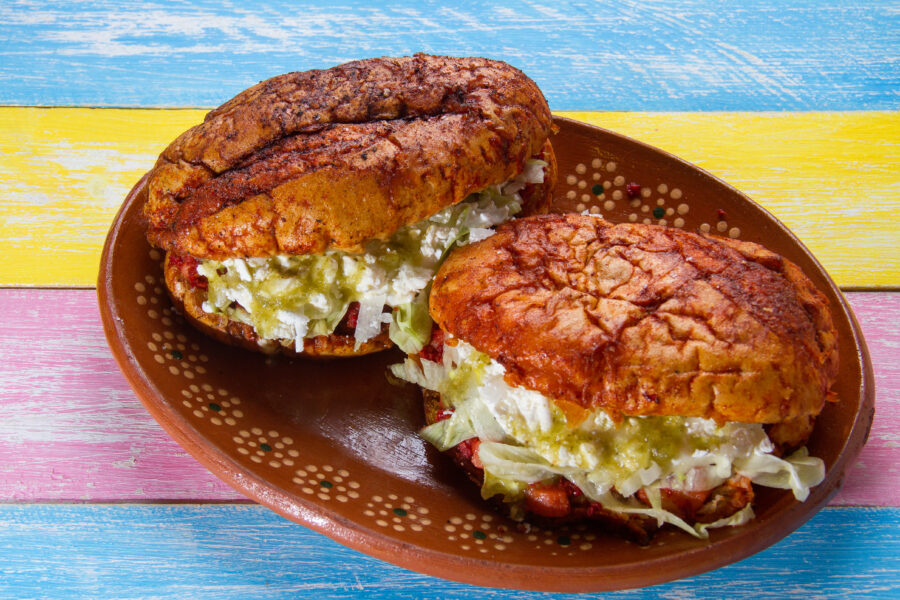
Pambazos are basically tortas, but made only using telera bread, and with much more specific fillings. They’re also meant to be much crispier and heftier.
Teleras are much flatter than bolillos are, which is what makes pambazos crispier when fried. Also, they’re typically dipped into a red chili sauce prior to frying.
Remember what we said earlier about really specific fillings? Well, these sandwiches are filled with potatoes and chorizo, making them a lot more filling.
Fajitas
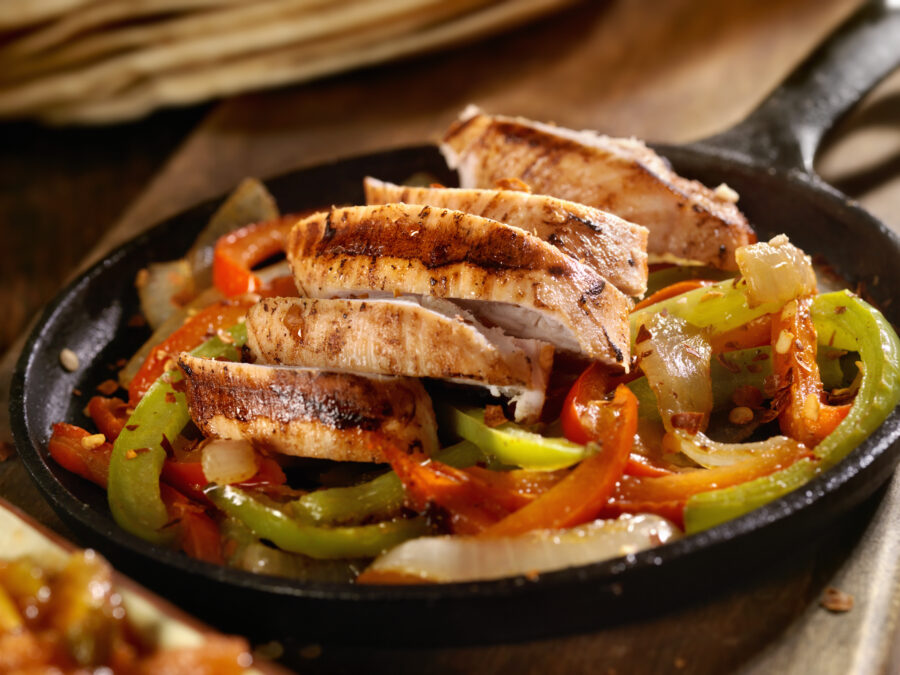
Did you go to Chili’s as a kid? You probably have that core memory of a waiter carrying a big cast iron pan filled with sizzling fajitas.
They’re technically a Tex Mex food, though they share a lot in common with traditional Mexican dishes. You can’t make fajitas without onions, peppers, and meat.
Strips of beef and chicken are the most popular meats to include. For a more filling meal, serve alongside rice and refried beans, topped with sour cream.
Menudo
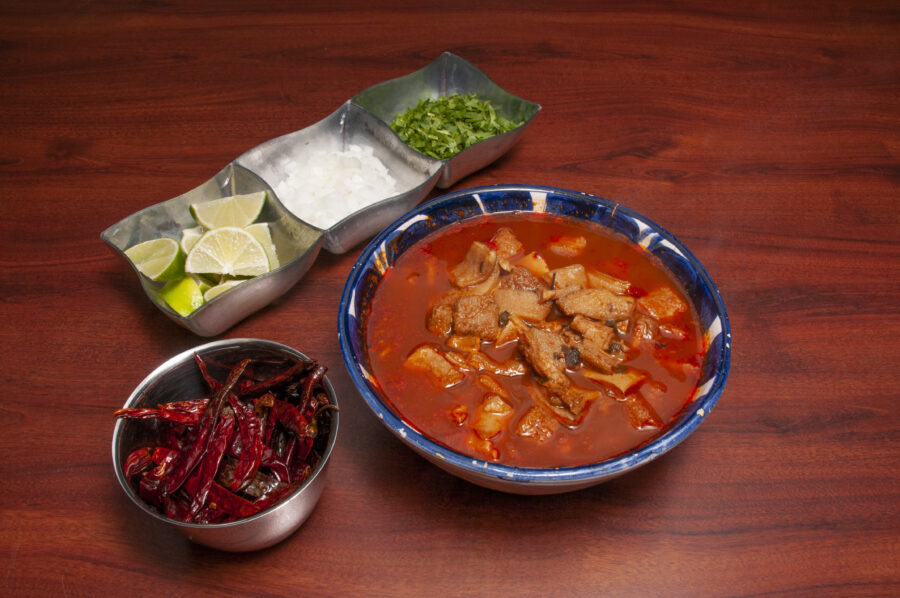
This is a flavorful soup made with cow’s stomach, also known as tripe. If you’ve never tried that before, don’t turn your nose up at it.
The broth is made from red chilis, onions, lime, honey, and oregano. Some ingredients vary from region to region, though not the tripe and broth.
In northern Mexico, hominy (maize kernels) is added to the soup. Over in central Mexico, sheep stomach is used instead of the typical beef tripe.
Barbacoa
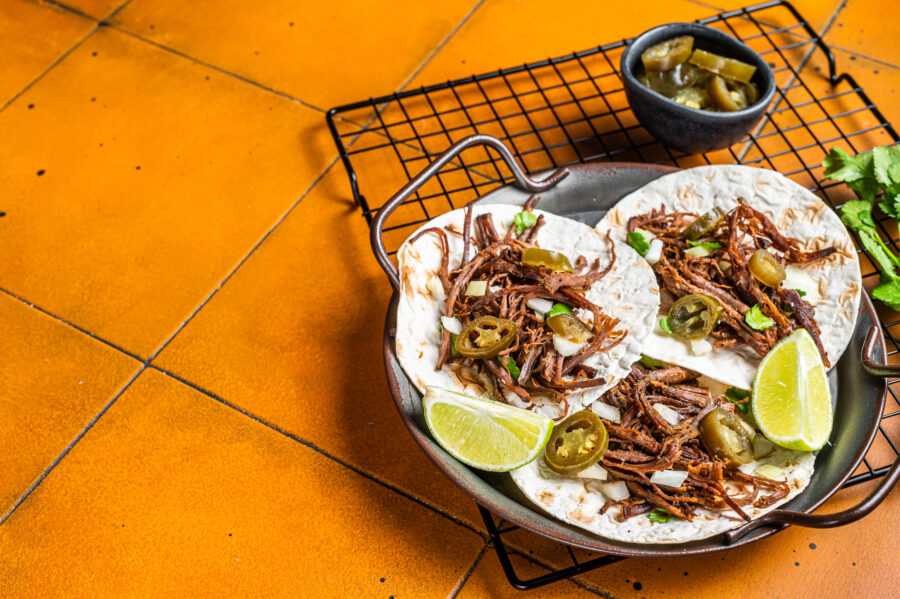
The type of meat that barbacoa refers to depends on where you are in Mexico. The cooking method is what the word actually points towards.
So, how is this Mexican food made? Well, barbacoa meat (be it sheep, goat, or beef) is made by slow cooking the whole animal over a fire.
This is another dish that calls for a Crockpot. You probably won’t be able to fetch a whole goat and cook it by dinnertime.
Sopes
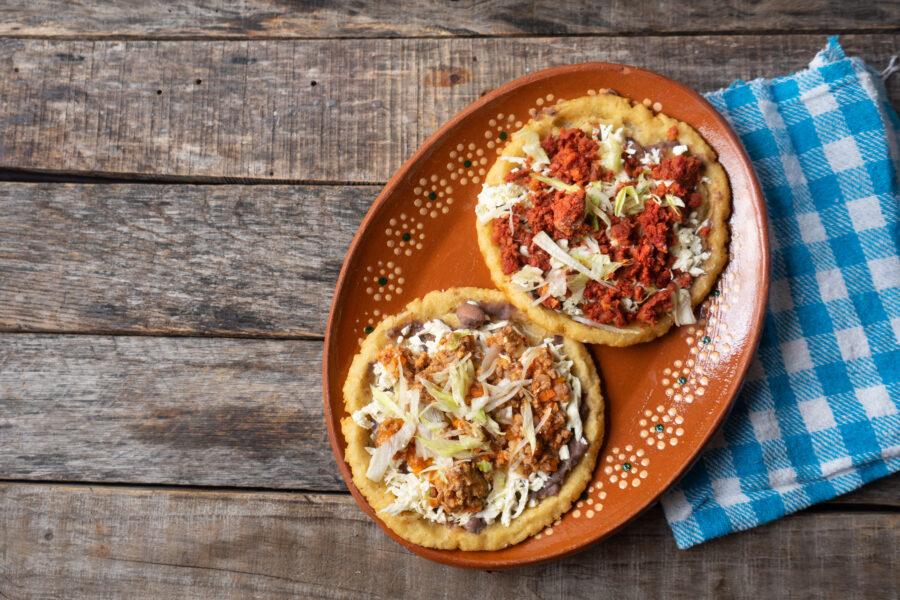
Think of sopes like a thick tostada. The base is made from masa and fried before being topped with refried beans, veggies, meat, and sprinkled with cheese.
Even though your base is less likely to fall apart than a thin tortilla, it still has a very small surface area. Go easy on the toppings.
Sopes are a great appetizer to use in place of sliders. The next time you’re hosting a get-together, give these a whirl. Your guests will thank you.
Carnitas
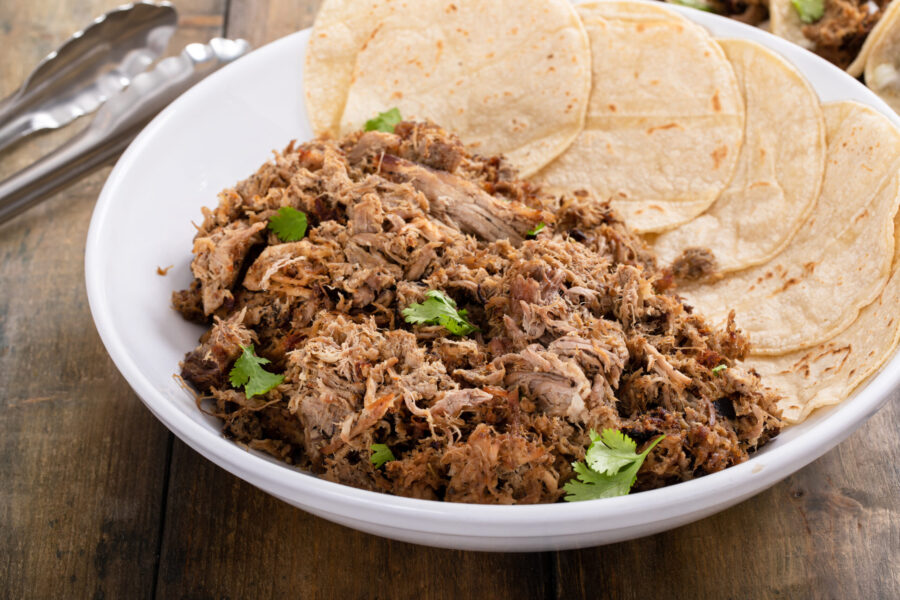
Carnitas, which originate in western Mexico, almost exclusively refers to shredded pork. Some say that it can be made with chicken, but that’s rare.
Known to many as “Mexican pulled pork,” carnitas are usually served in small corn tortillas and topped with cilantro, pico, crema, and lime juice.
Salt, pepper, oregano, and cumin do well as seasonings. People also like to add jalapeños, garlic, onions, and orange juice for an extra punch of flavor.
Chilaquiles
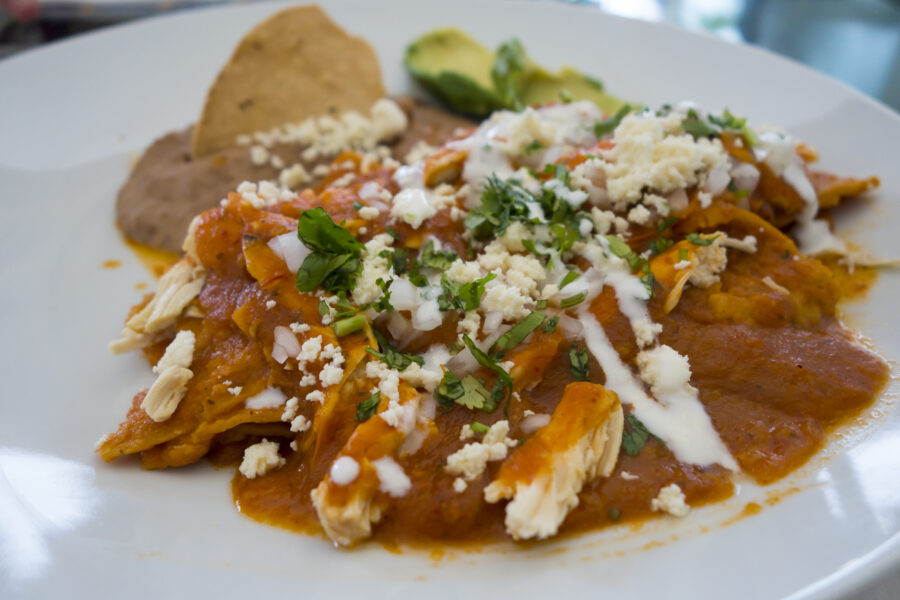
Chilaquiles can seem a little like nachos at the outset, since they’re made with tortilla chips. However, they’re actually quite different from each other.
For one thing, you can’t eat chilaquiles with your hands. Its soft consistency, caused by cooking in salsa roja and broth, calls for a fork and knife.
Once they’re done, they’re topped with a fried egg, avocado slices, and crema. Feel free to add some veggies and cheese – this dish is versatile.
Elote
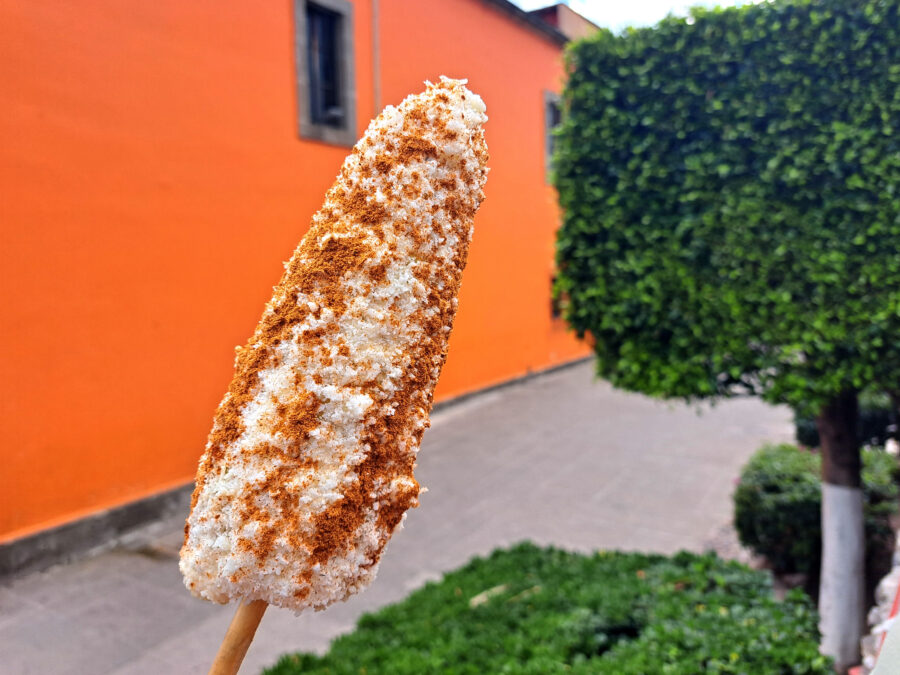
Elote is popular Mexican street food. Not only is it a great snack, it can also serve as a side to other, larger dishes.
You can’t beat some elote. It’s the perfect snack for when you’re on the go. Corn, cheese, and delicious seasonings — what is there not to like?
Grill some corn kernels and mix it with mayo, cheese, chili powder, lime juice, and cilantro. Don’t forget to be generous with that lime!
Ceviche
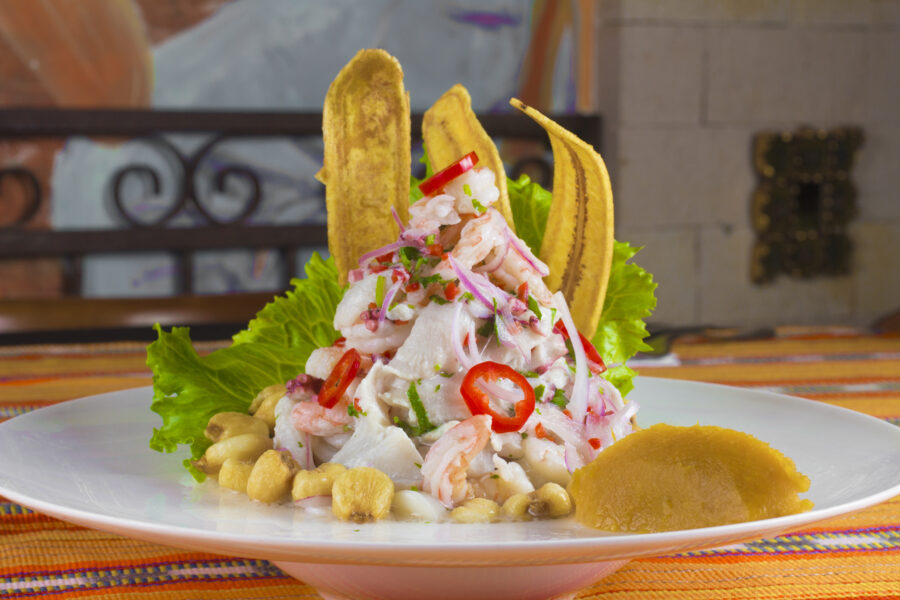
As is the case with many dishes, ceviche can be found in most Hispanic countries. Each country, including Mexico, puts their own spin on it.
Across all cultures, however, ceviche has general commonalities. It is a seafood dish served cold, where raw fish is soaked in some sort of citrus marinade.
Mexico makes ceviche with tomatoes and avocados, and serves it with a side of tostadas. Their crispiness adds the perfect additional layer of texture.
Guacamole
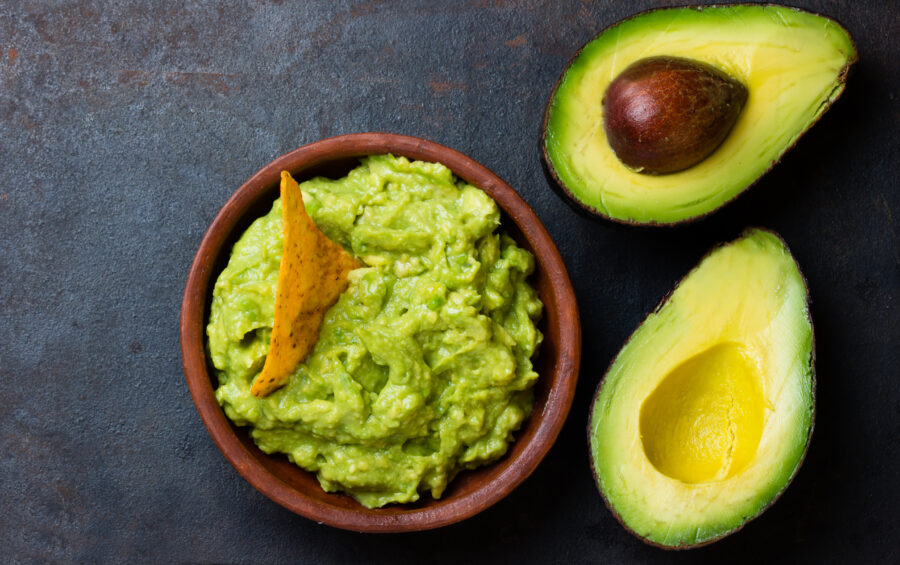
Did you know that guacamole traces back centuries? When the Spaniards first arrived in southern Mexico, they noticed the Aztecs eating something called “ahuacamolli.”
Apparently, the Spaniards couldn’t pronounce Nahuatl word, and came up with their own version: guacamole. If it isn’t part of your cooking repertoire, you’re missing out.
Chop up some tomatoes and onions and mix it together with mashed avocado. Then, season with garlic, salt, and lime juice, and top with a bit of cilantro.
Mole Poblano
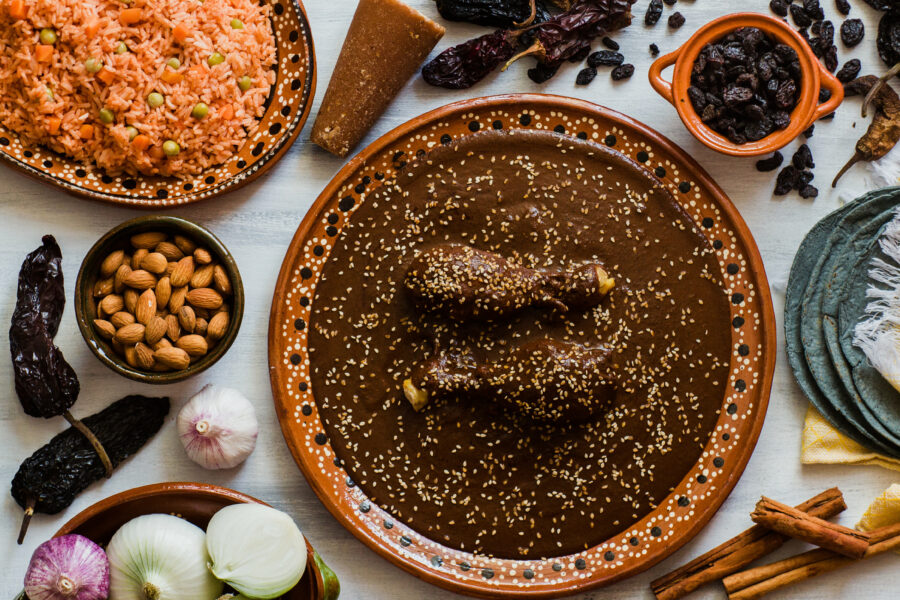
Chocolatey, flavorful, with a little bit of spice. Mole poblano combines what an outsider might think are contradictory flavors and puts those doubts to the test.
Considered one of Mexico’s national dishes, it originated in Puebla, a city east of the country’s capital. The key ingredients are chocolate and chili peppers.
It’s typically used as a sauce to moisten turkey or chicken. However, you’ve probably also eaten it on top enchiladas or inside of tamales.
Pozole
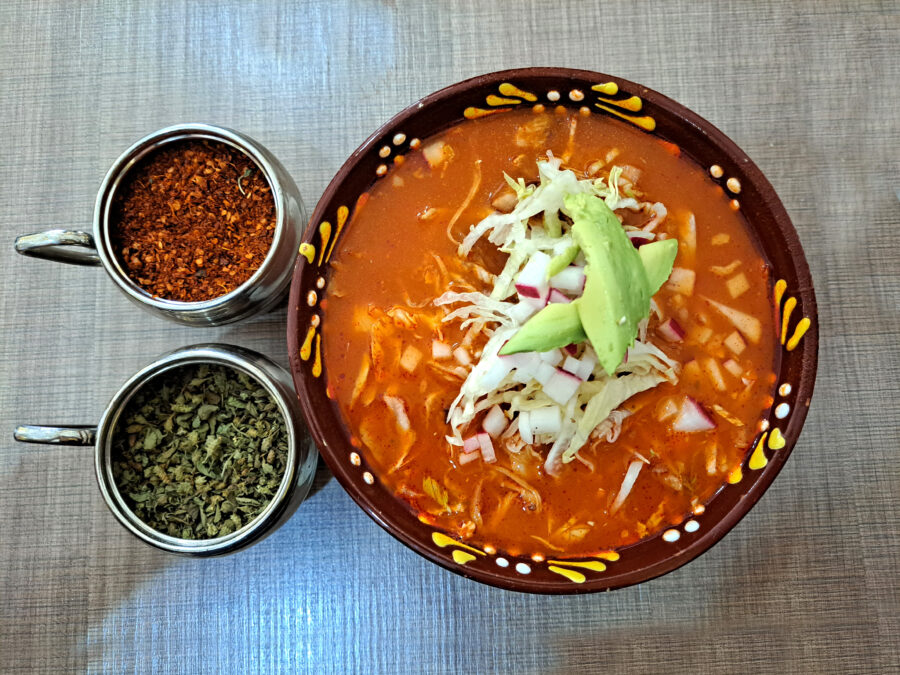
Pozole is a meaty and spicy soup, with the central ingredients being pork and chili peppers. It’s delicious, and a total delight for the senses.
Hominy, garlic, and onion are added to chicken broth. Dried guajillo and ancho peppers are used for spice, but if you can’t take the heat, don’t worry.
Ancho peppers are known for their flavor over their spice. While they’ll add a little kick, they definitely won’t burn your tongue off. You’re fine.
Chiles en Nogada
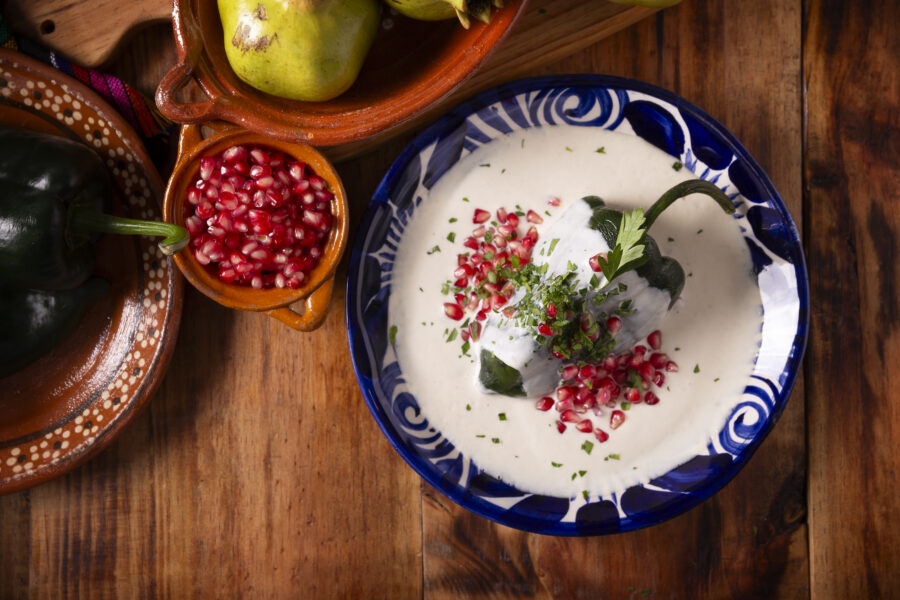
These are another Mexican national dish. It takes just a quick glance at the stuffed green pepper, white cream, and red pomegranate seeds to see the relevance.
Within the pepper, you’ll find ground beef, cooked with raisins and chopped nuts. The cream is made out of walnuts, almonds, and queso fresco.
Chiles en nogada are only made during the summertime, in order to commemorate Mexican independence. It’s also because the harvest season is in the summer.
Quesadillas
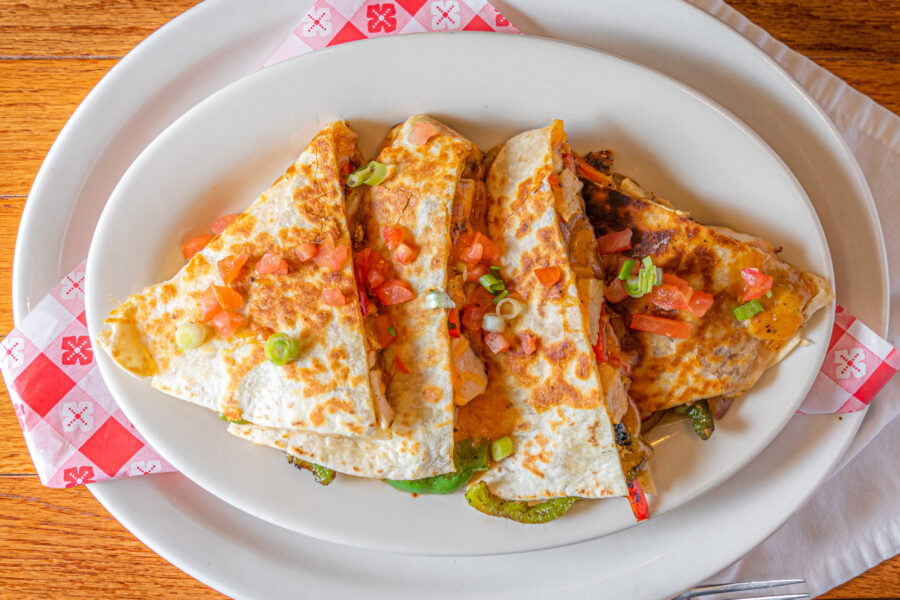
Quesadillas can be anything you want them to be, so long as there’s melted cheese inside of a heated, folded tortilla. There are endless possibilities!
We’ll make a little suggestion, though. Dice some bell peppers and onions, shred some chicken, top it off with sriracha, and you’ve got a solid stuffed quesadilla.
You can also make some homemade salsas to dip your quesadilla into. We think that salsa roja, salsa verde, pico de gallo, and/or guacamole are best.
Tamales
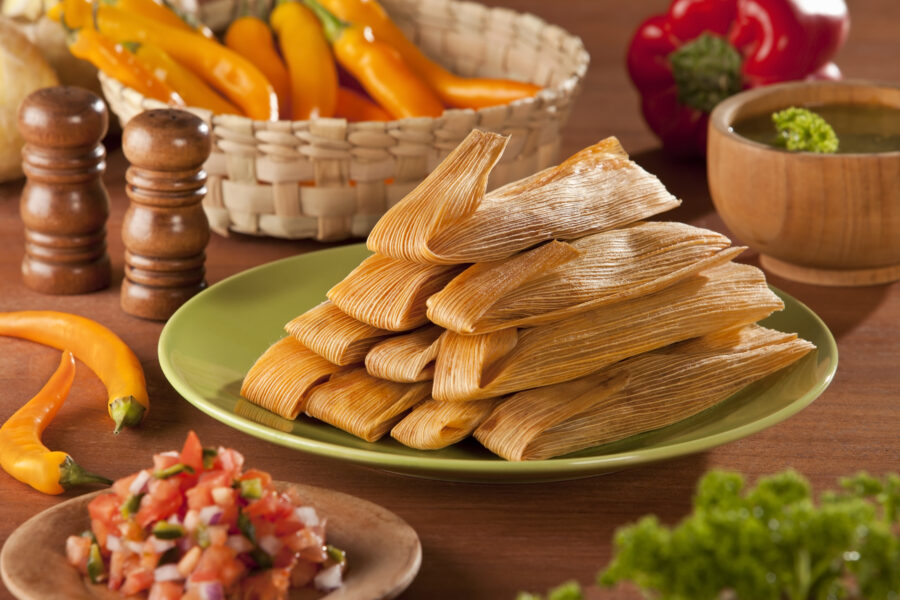
Tamales are a staple of many Latino cultures, Mexico just being one of them. However, the Mexican tamale is one of the most famous.
In Mexico, masa is used as the dough. The inside is then filled with cheese, various meats, and/or beans and different kinds of salsa.
Though many South American countries use banana leaves to wrap their tamales, Mexico serves them in corn husks. We can’t get enough of them!
Enchiladas
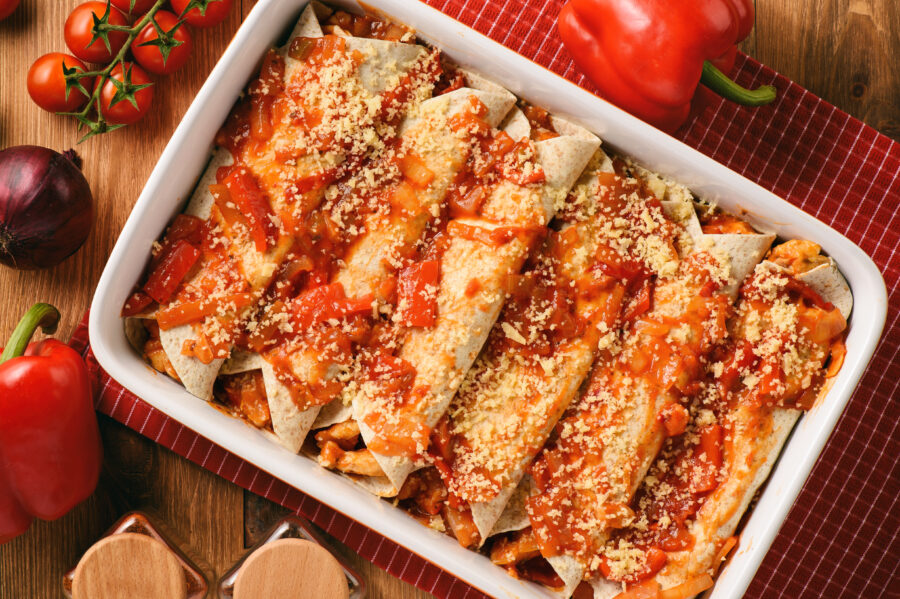
These are very similar to flautas, in that they’re both slim, long tortillas stuffed with meat. However, flautas are fried, whereas enchiladas are baked.
They’re also pretty hard to eat with just your hands. They’re famously smothered with sauce (remember mole poblano?), melted cheese, and sour cream.
They’re usually served with either black or refried beans and rice as well. Super filling, and a total classic – what’s not to love?
Tacos
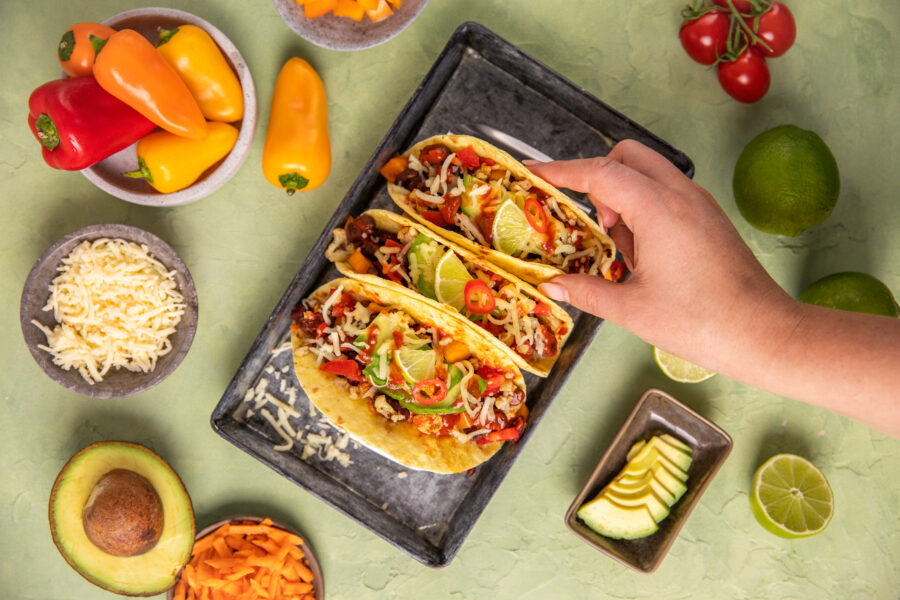
Tacos can do anything. You want some crunch? Use a hard shell. Don’t want bits of fried tortilla stuck in your mouth? Use a soft shell.
A taco will fit perfectly in your hand, leave the meal serving to your guests. Plus, it can be filled with anything you want. Yes, please.
They’re tacos. You love them, we love them, everybody loves them. And what’s not to love? You can put whatever you want on them. Buen provecho.
Carne Asada
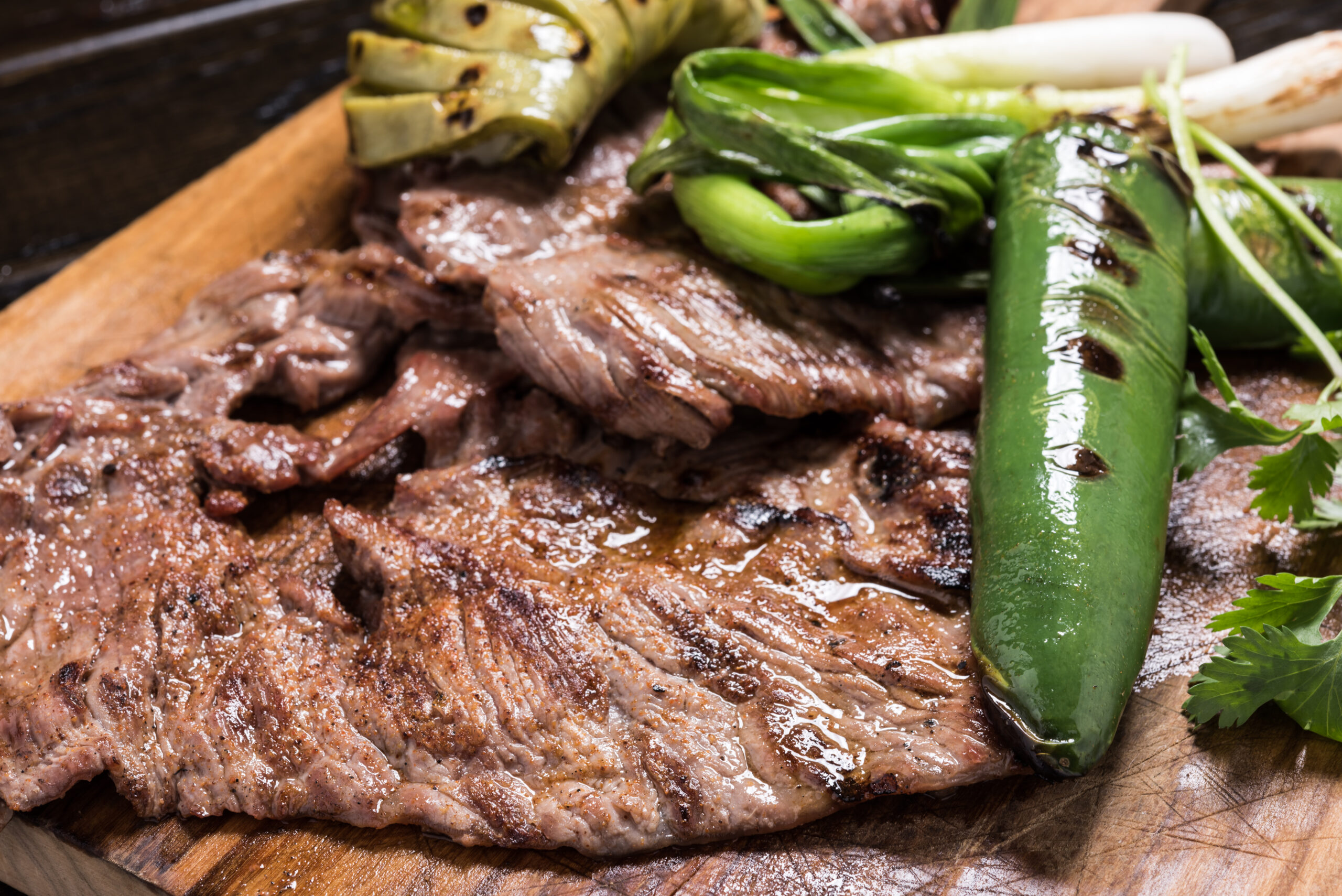
Carne Asada is a delicious dish that has taken over the Mexican food game. The steak itself is just too good to resist.
Whether you decide to put it in a burrito, on a taco, or just serve it straight up, there is no way you will miss going with carne asada.
The best part of carne asada is the flavor. It’s marinated to perfection, cooked simply, and seldom turns out poorly!

